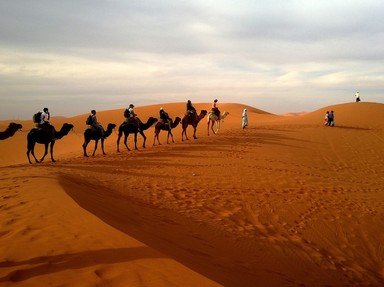Quiz Answer Key and Fun Facts
1. The Namib Desert is located on the southwest coast of Africa. What does the name "Namib" mean?
2. Of course, one would expect to find the Namib Desert in Namibia. In which other two countries is the desert also located?
3. Sometimes used to describe the entire coastal area of the Namib Desert, what name is used to describe the region there that is known to be dangerous for ships?
4. The Namib Desert is so vast that it actually runs into two other deserts. To the north it runs into a desert called the Moçâmedes Desert; which, perhaps better known, desert does it border to the south?
5. Near the coastal area of the Namib Desert there are sand seas, ares where the terrain is relatively flat with very little vegetation. What is another name for this type of sand feature?
6. Although the term "desert" may signify to some an area that is barren and nonproductive, the Namib Desert contains some of the area's most important natural resources. What is NOT mined there?
7. What is the name of the ocean current that is responsible for the thick fog that can be seen at some times in some areas of the Namib Desert?
8. Prior to the 20th century, which of the following groups lived a hunter-gatherer existence in the Namib Desert?
9. Despite being one of the driest deserts in the world, a number of animals call the Namib Desert home. Is the desert elephant that lives there considered to be a separate species?
10. What type of geographical feature is "Big Daddy", which is located in the Sossusvlei area of the Namib Desert?
Source: Author
ponycargirl
This quiz was reviewed by FunTrivia editor
agony before going online.
Any errors found in FunTrivia content are routinely corrected through our feedback system.
